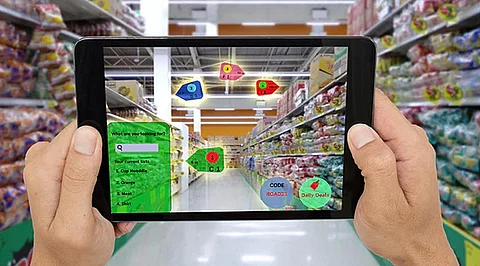

A new artificial intelligence tool created by Google Cloud aims to improve a technology that has previously had trouble performing well by helping big-box retailers better track the inventory on their shelves. Google's shelf inventory is an AI tool that uses videos and images from the retailer's own ceiling-mounted cameras, camera-equipped self-driving robots, or store associates, to identify and analyse the availability of consumer-packaged goods products on shelves. This AI tool is now in preview and will become broadly available in the coming months.
This technology was unveiled by Alphabet Inc.'s cloud business, along with a set of artificial intelligence tools aimed at e-commerce. According to Robert Hetu, VP analyst for retail at IT research and consulting firm Gartner Inc., "A lack of timely, accurate information about shelf inventory is a major problem for retailers and so difficult to manage that it is industry standard to just make guesses". According to Carrie Tharp, Google Cloud's vice president of retail and consumer, having that information would help retailers pad their lines in a variety of ways, including allowing them to replenish out-of-stock items faster and lose fewer sales opportunities.
Google Cloud also added a new personalization AI capability and a new browse feature to its Discovery AI solutions as an update to help retailers upgrade their digital storefronts with more dynamic and user-friendly shopping experiences. Finally, the Recommendations AI solution from Google Cloud has introduced new machine learning capabilities that enable retailers to dynamically optimise their product ordering and recommendations panels on their e-commerce pages and provide tailored recommendations for repeat purchases.
According to Carrie Tharp, VP of Retail and Consumer at Google Cloud, "upheavals over the past few years have reshaped the retail landscape and the tools retailers need to be more efficient, more compelling to their customers, and less exposed to future shocks." "The retail sector has a tonne of opportunity in spite of the uncertainty. The leaders of tomorrow will be those who use the most cutting-edge technological tools, like artificial intelligence and machine learning, to address today's most urgent in-store and online challenges."
Retailers are concerned about the issue of low or no inventory on in-store shelves. They have tried a variety of shelf-checking technologies over the years, but their effectiveness has frequently been constrained by the resources required to develop trustworthy AI models to detect and differentiate products—from the numerous varieties of toothbrushes to the various jam and jelly flavours.
The new Google Cloud AI-powered shelf checking solution is now accessible in global preview and can assist retailers in increasing the availability of products on their shelves, giving them a better understanding of how their shelves actually look, and determining where restocks are required. The shelf checking AI, which is based on Google Cloud's Vertex AI Vision and powered by two machine learning models—a product recognizer and tag recognizer—allows retailers to overcome a very challenging challenge: how to identify products of all types at scale using only the visual and text features of a product, and then transform that data into useful insights.
Retailers don't have to invest money, time, or effort into gathering data and building their own AI models. Google Cloud's shelf checking AI can recognise products from a variety of image types taken at different angles and vantage points by drawing on Google's database of billions of unique entities—a particularly challenging task. The types of imagery that retailers can provide to the AI for shelf checking will be highly flexible. A retailer might use images from a camera mounted on the ceiling, a worker's smartphone, or a robot roaming the store checking out the shelves.
Conclusion: This technology is currently in preview, but it will soon be generally accessible to retailers around the world. A retailer's data and imagery remain their property, and the AI can only be used to identify products and price tags.
Join our WhatsApp Channel to get the latest news, exclusives and videos on WhatsApp
_____________
Disclaimer: Analytics Insight does not provide financial advice or guidance. Also note that the cryptocurrencies mentioned/listed on the website could potentially be scams, i.e. designed to induce you to invest financial resources that may be lost forever and not be recoverable once investments are made. You are responsible for conducting your own research (DYOR) before making any investments. Read more here.
